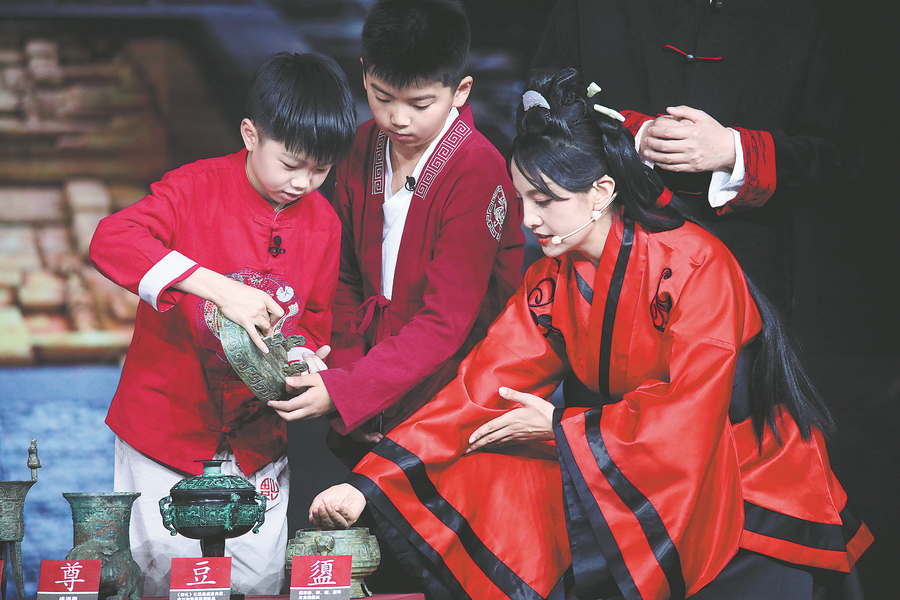

Bi Wei, the show's executive chief director, recalls that the crew started to brainstorm about the program in February last year.
"The 'rabbit culture' in China has a long and profound history, ranging from the formation and evolution of the Chinese character tu (rabbit) to the mythological stories and legends about the creatures, as well as poems and literature inspired by the animal," says Bi, adding that the legacy made his team believe that a program about rabbits would appeal to children.
Aside from culture, ancient China's scientific knowledge, such as the timekeeping system, is also featured in the show.
In the first episode, two hostesses perform gengfu, equivalent to night guards on watch. In ancient China, their job was to patrol the streets at night and strike a large gong to mark the hours of the night, reminding people to be aware of the time.
"We also showcase various timekeeping methods and tools in the program, such as water clock and sundial, with the hope of sparking more interest in the Chinese civilization among young audiences," says Bi.
The veteran director says he is most impressed by a cultural relic — an iconic caisson featuring three hares with a total of three ears — with a tricky design that indicates ancient Chinese people's love of the number three.
Discovered in a cave at the Mogao Caves in Dunhuang in Northwest China's Gansu province, the caisson is believed to have been constructed during the Sui Dynasty (581-618).
Referring to a quote from the ancient classic Tao Te Ching, which is about the special meaning of the number three, Bi explains that san, or three, symbolizes the cyclical nature of life, reproduction and growth.
"Rabbits were regarded as auspicious animals in ancient times, often seen as a sign of blessing, so that a family could have many offspring and become prosperous," Bi adds.
Noticing the current trend of young audiences becoming more interested in traditional culture, Bi concludes that he and his fellow TV industry workers have made a concerted effort to explore fresh and creative ways to retell Chinese history and cultural stories.
He says this has shaken off the previously "rigid and dull" approach and shifted it to a more "vivid and lively "way of capturing the younger audience.
Contact the writer at xufan@chinadaily.com.cn